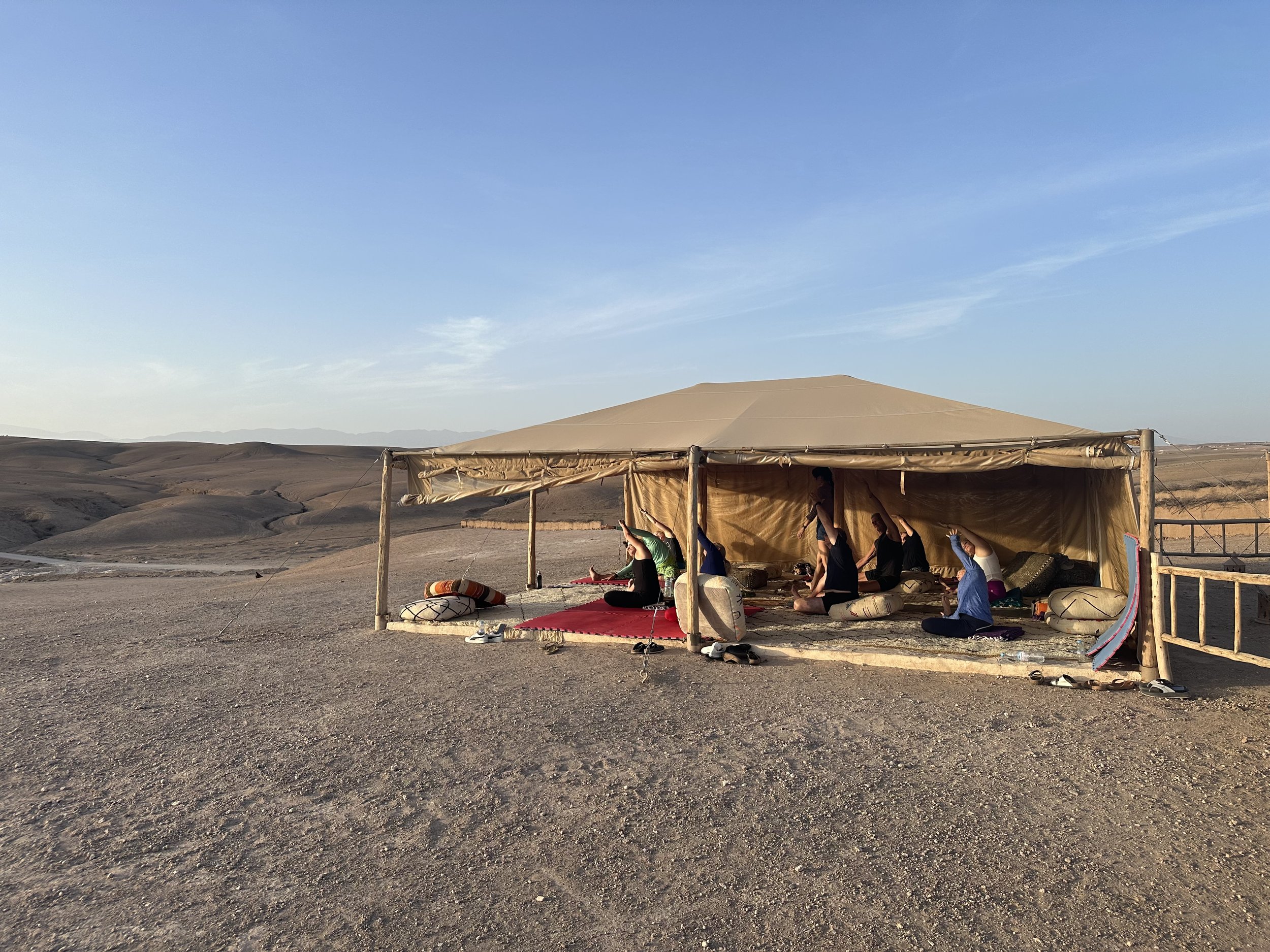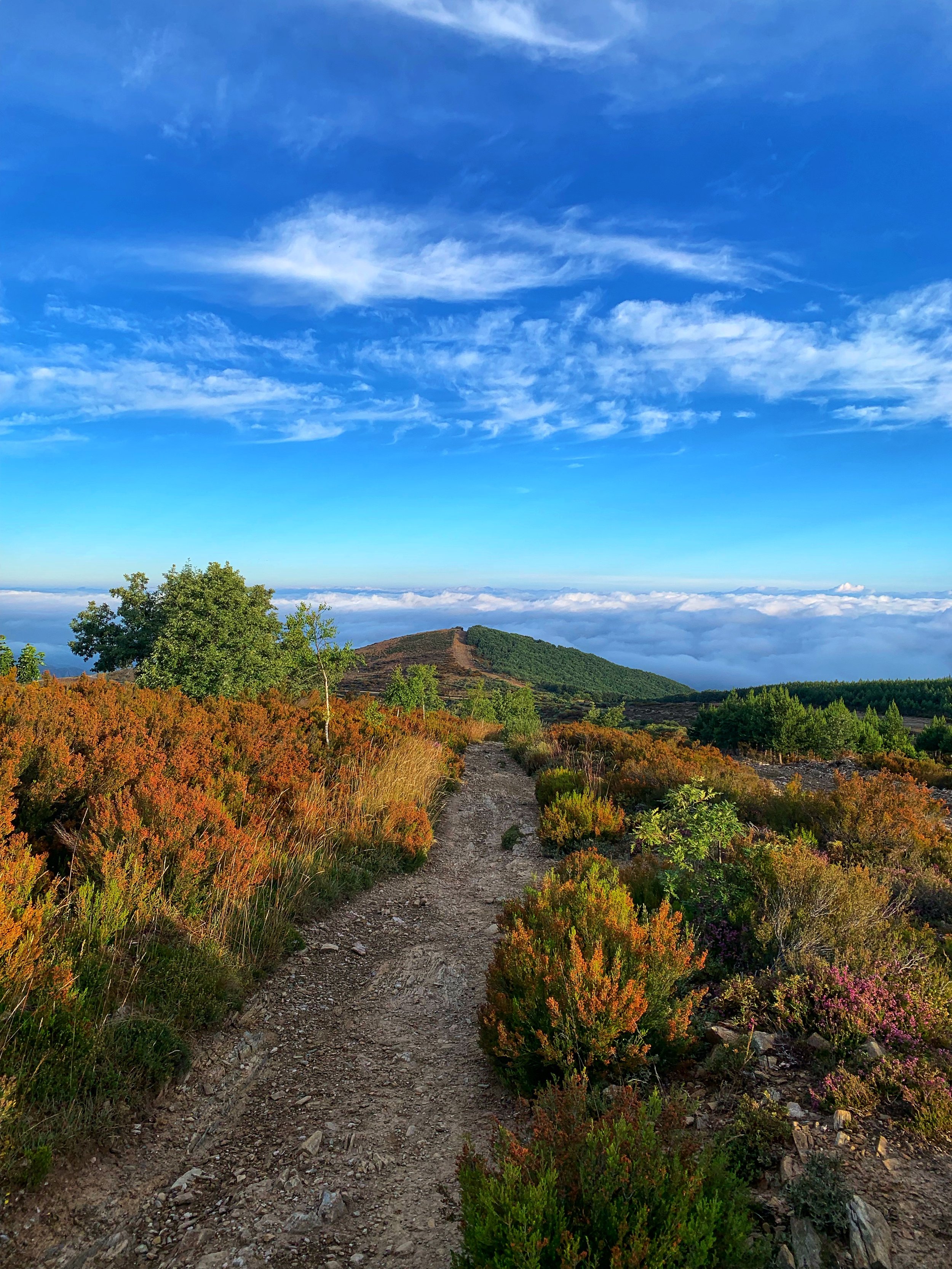Five pillars support and define every Shared Pilgrimage retreat.
Yoga
The foundation of all our retreats. Practicing and studying yoga brings mindful integration to our pilgrimages. We may practice asana in a traditional yoga shala, on a rooftop overlooking an old city, or in a tent overlooking a desert. We may gather for meditation in a garden or around a body of water. By practicing yoga as close to nature as possible, we become more aligned with the rhythms of the sun and moon. Magic happens.
By turning our gaze inward, yoga helps us become more aware of our shared pilgrimage’s imprint on our body, our heart, and our soul. Yoga provides us with the tools to understand ourselves better so we may more mindfully engage with the world around us.
History
The stories that link pilgrims past and present. Shared Pilgrimage retreats always center learning the history of the places we travel to. While we go on retreat to step away from our daily routines, we also want to immerse ourselves in the stories of the people who host us. By learning about their histories (and there is always more than one version), we connect to people and cultivate empathy.
We learn history best by walking through the places where it happened. That may mean an urban walking tour taking in landmarks and religious buildings. We turn down an old alley, and we can catch glimpses of lives lived long ago. Studying history may also mean visiting historical sites and wandering among the ruins. We explore the remains of yesterday so we can imagine how people lived.
Culture
The glue that holds people together. Learning about the living culture of the places we go on retreat allows us to experience how people live today. Culture is the stories and traditions that give meaning to our daily lives.
We may attend a cooking class to learn how to prepare local dishes (always with vegetarian options). We may participate in local religious rituals to understand how they give meaning to people’s lives. We may read or hear stories and poems or watch dances to experience how our hosts tell stories.
Community
The ties that connect us to our fellow pilgrims. Shared Pilgrimage retreats emphasize people coming together to foster community and connection. We regularly sit together for communal meals in special locations letting the food and conversations flow. We come together in picturesque spots to have digital representations (photos) that help us remember the memories we created on retreat.
When possible, we invite the people who help guide us in retreat to sit down and be with us during communal moments. Retreats depend on the kindness of hosts and we want to welcome them into our community of pilgrims.
We also keep our groups small (usually 12 people) and seek out family-run retreat centers.
Getting Lost
The thread that stitches together every Shared Pilgrimage retreat. Getting Lost can sound scary at first, but we use it metaphorically to describe how we approach the other pillars. When we become lost, we also become fully immersed in something. We forget to be productive and instead find ourselves living in the present.
When traveling to somewhere distant, getting lost means we are more engaged with the places around us at any moment. Instead of focusing on where we are going, we pay more attention to what’s around us now. For Shared Pilgrimage, getting lost is never something to avoid. Getting lost is an ideal to aspire to.





